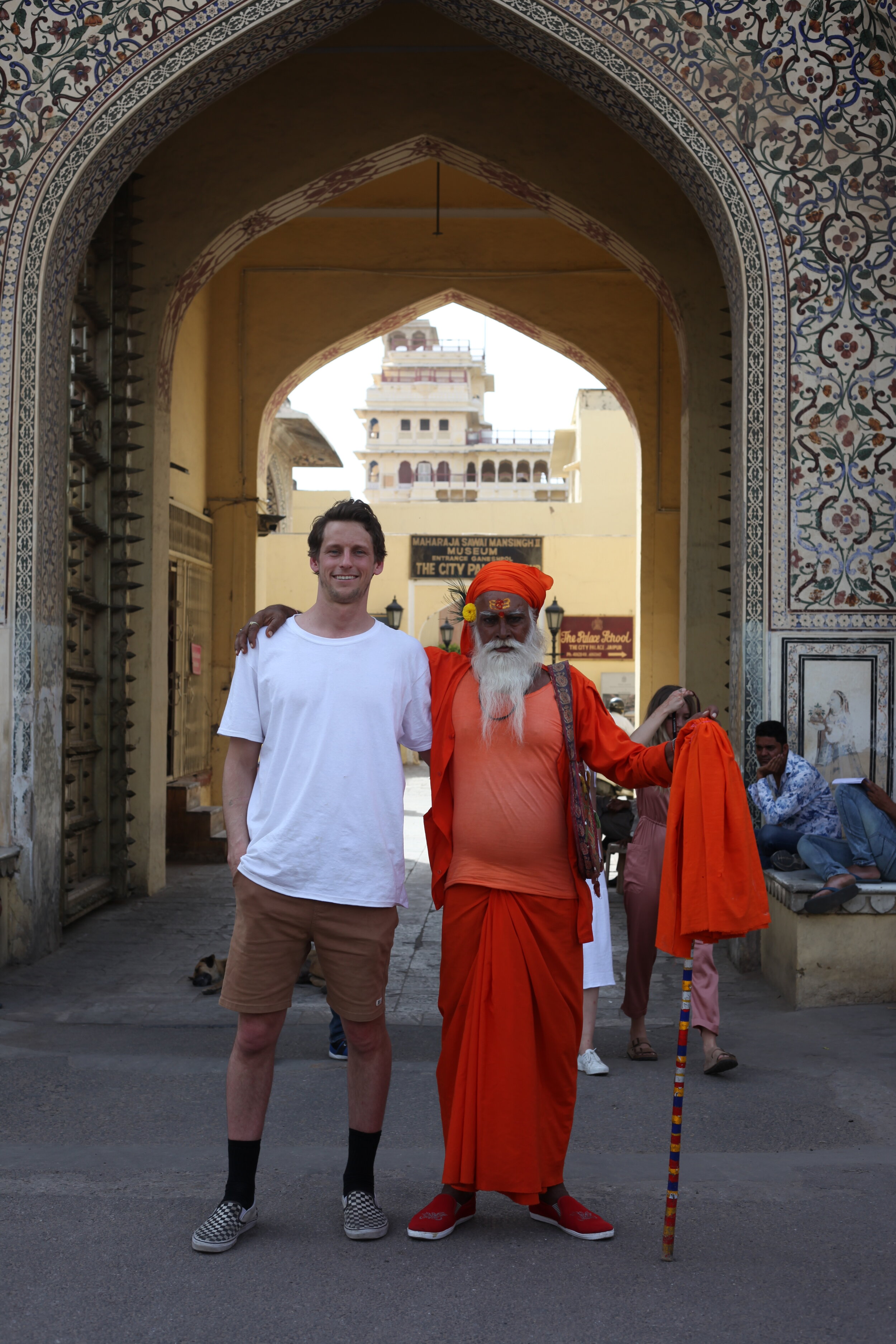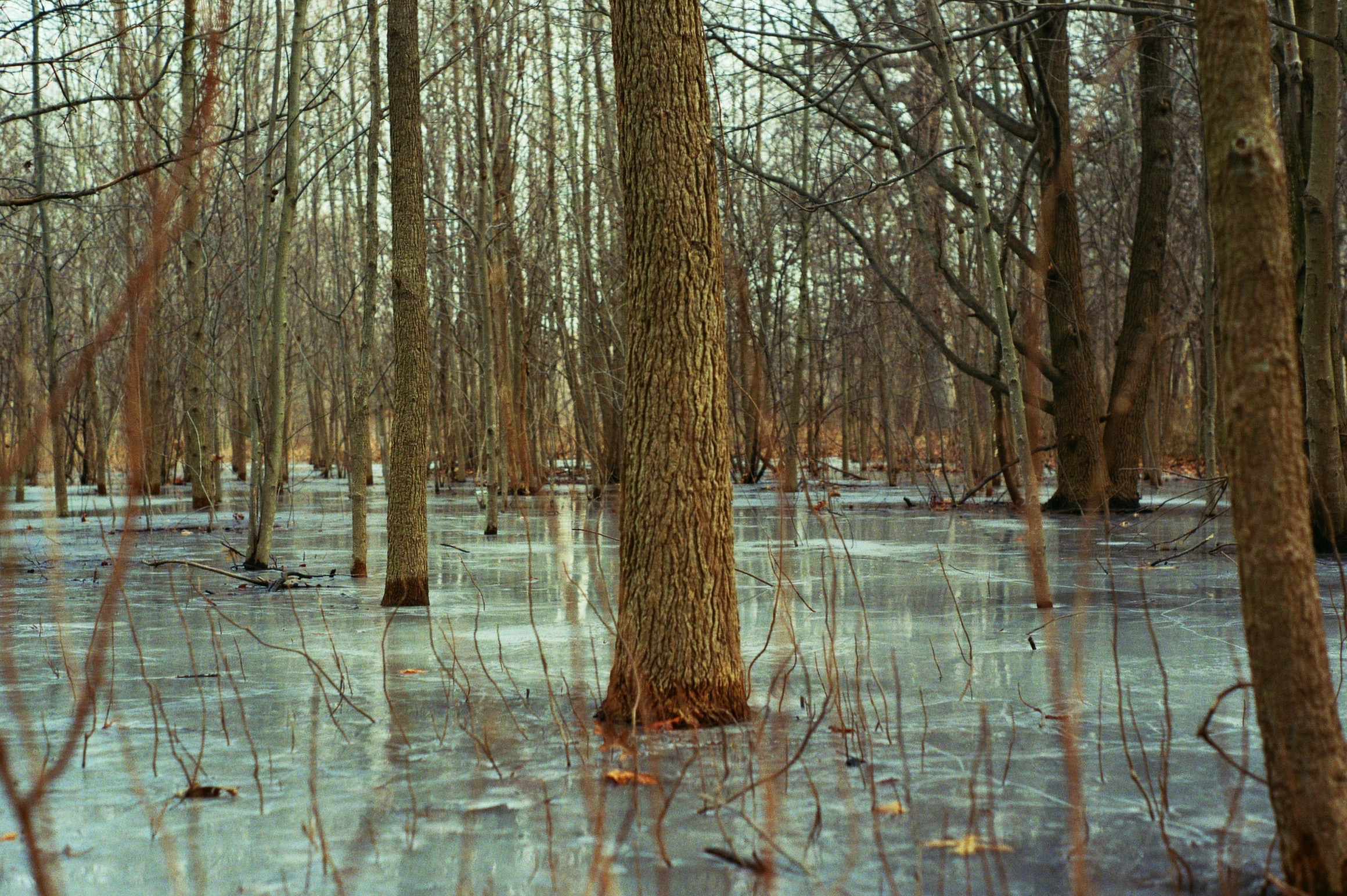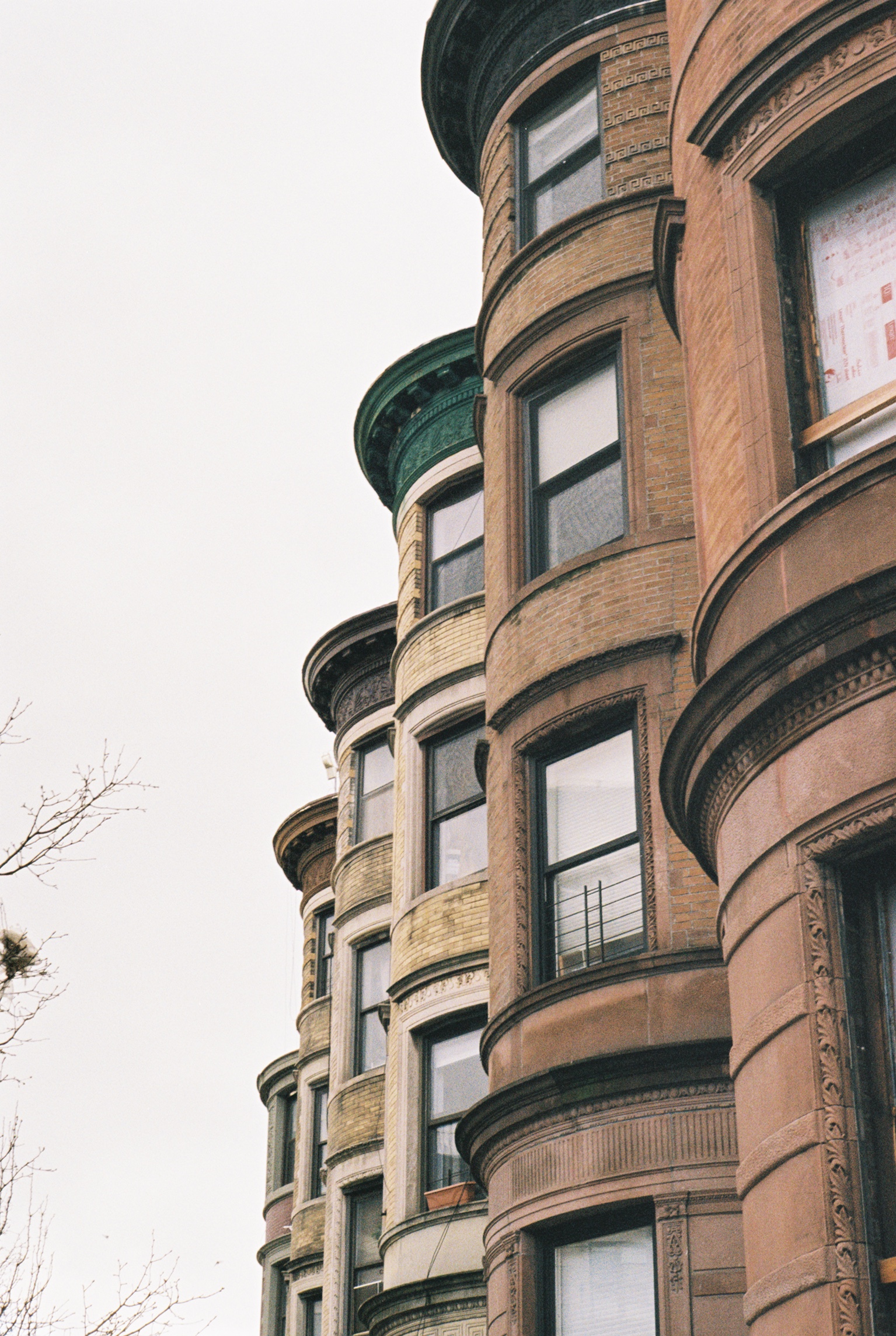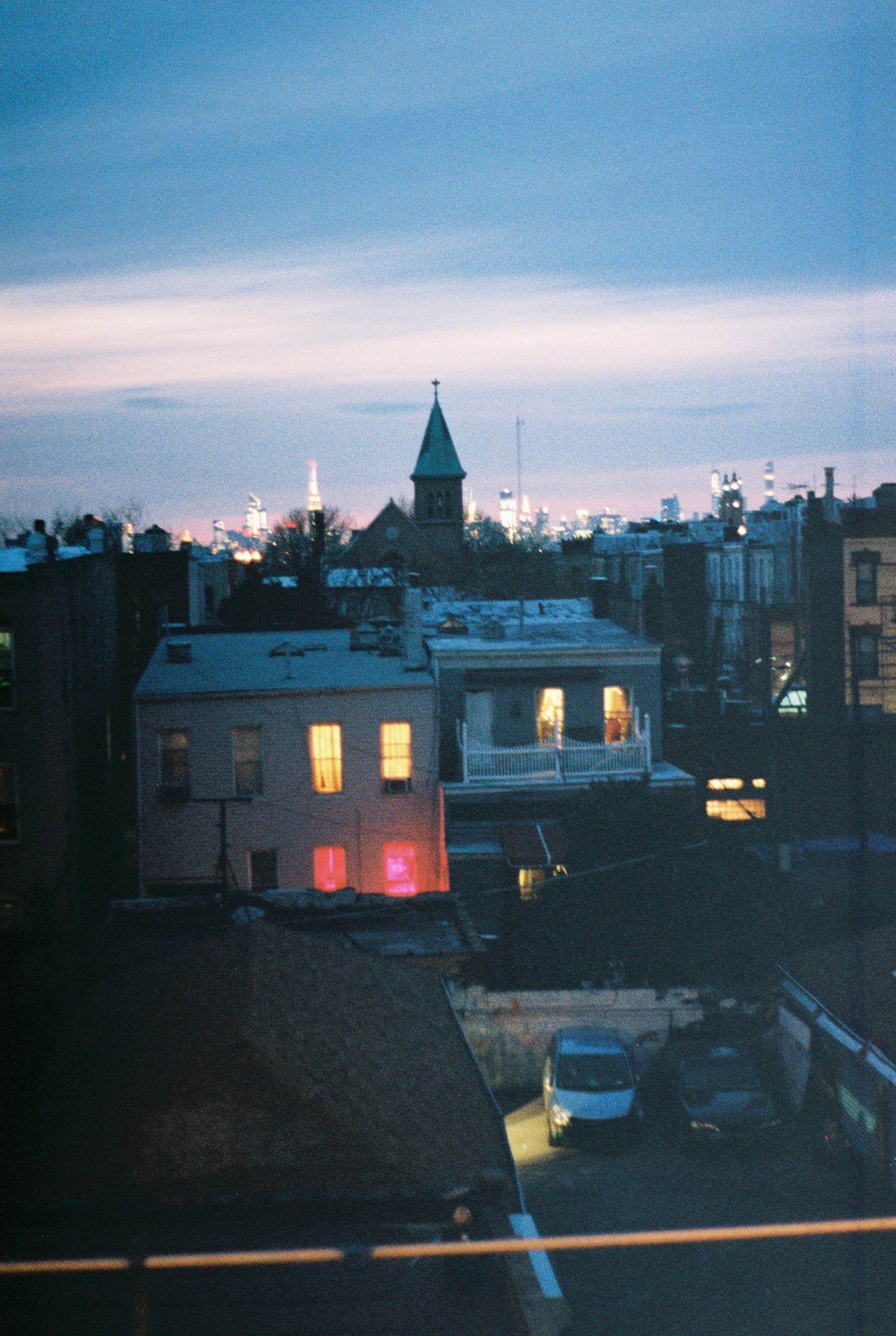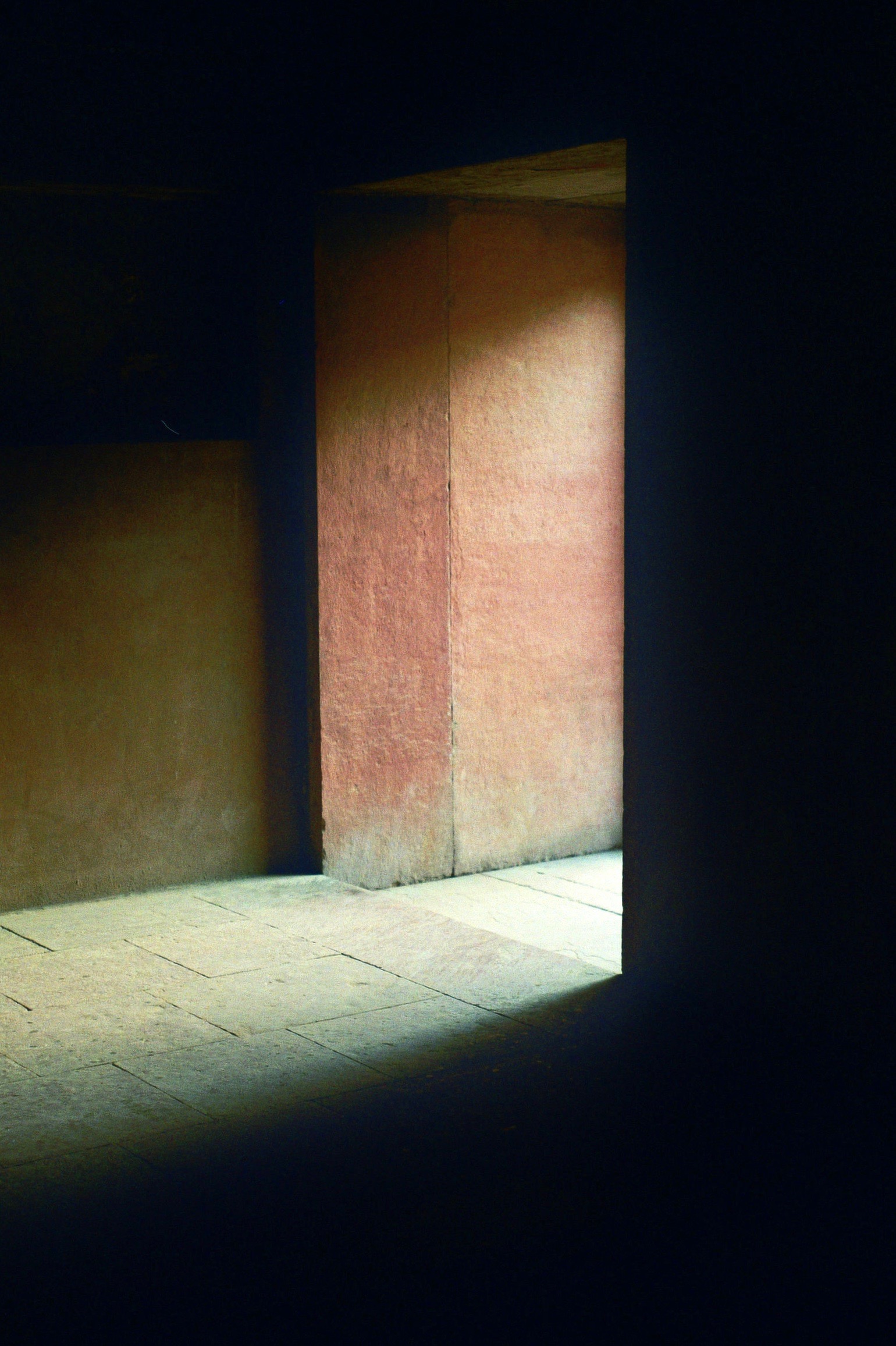INDIA: Part II

“The great extension of our experience in recent years has brought light to the insufficiency of our simple mechanical conceptions and, as a consequence, has shaken the foundation on which the customary interpretation of observation was based”
- Niels Bohr, famed Danish physicist and recipient of the 1922 Nobel Prize in Physics, in his 1934 publication “Atomic Physics and the Description of Nature”
Mr. Bohr, for whom I’m long had a bit of fandom, expresses the limitations of our senses and measurements of them quite plainly in the above sentence. The very notion of what it means “to know” can and must be questioned outright, and daily at that. Our senses are inherently limited and provide but a glimpse of that which we attempt, however clumsily, to perceive. This questioning of “what it means to know” will at first likely not come from within, as we are often too tainted and naïve to achieve such humble self-awareness alone, but rather from outside ourselves. It is the paradox and final secret of Life itself that such outside stimuli are often the only forces with enough strength to shatter our illusion of separateness and open us to the reality that we are just as much a part of that which surrounds us as that which comprises us. They are one and the same. Paradoxical it is still that we often must be exposed to pain or madness or chaos in order to know firsthand the true nature and infinite beauty that is Reality itself. To again quote my generationally separated friend Neil:
“How wonderful that we have been met with a paradox. Now we have some hope of making progress”.
As of yet in this short time I’ve lived on Earth, nowhere has provided as ample an opportunity to experience such a rattling of the Soul as the Indian subcontinent. Everything is out in the open, exposed. Open sewer systems channel human feces down streets multitudes busier than 5th Avenue. Dead dogs lie commonplace in the roads. Childhood homelessness remains apparent, undeniable, exposed: it is heartbreaking. Wages are abysmal, and millions struggle to make it to the next day.
But this is not a sob story, nor an invitation to sympathize or grieve.
This place, India, is a living and breathing tale of triumph. One of my favorite countries on Earth, if not my favorite, period.
The mundanity of life found in America at large is entirely forgotten here. The typical undermotivated and fatally complacent American would die (hopefully) from lack of DirectTV and high fructose corn syrup withdrawals in minutes in the Indian Sun. In India, people toil with a smile, and from such toil produce a culture that exudes divine beauty. The intimacy that Indians have with the futility of existence has allowed their greatest contributions to the World to flourish and birthed the highest forms of human understanding ever reached.
***
I read the Bhagavad Gita and The Upanishads (among other texts, such as the Bible and Wikipedia articles about Napoleonic France or hydrofluvial geomorphology or episode listings of MTV Next) most mornings as I take the train in from Brooklyn to my office in Manhattan. It takes, on average, 41 minutes.
In that span of time, I’m entirely underground…shut off from the world, shut off from the grip of technology and above-ground stimulation. When cell service regains briefly at each station, I remain fixated on the ancient texts, hoping they’ll inform my day and knowing full well that I’ll fail through them with the indelible imperfection of a very average, no, sub-average human being. In them, the themes one would hope for and expect in any great epic are found: love, loss, courage, fear, and the worst evil of them all, pride.
Yet one thread binds them all, a thread of silk with its many beads of dew strung along its length. Familiarity with the impermanence and interconnectivity of all things. By recognizing the finite nature of all by which we are surrounded, the transience of every object and every moment, we see that “they” are not “theys” at all but in fact attributes and occurrences within one, contiguous whole. The goal of life, Indian thinkers proposed, is to find union with this whole, with Ultimate Reality itself, by breaking through this illusion of separateness after having fully understood that nothing is permanent but the whole itself. The realization, rather than fostering fear, reassures us that all we have is the present moment, and allows one to finally rest in the Now.
This all sounds grandiose, fluffy, and much like the lexicon employed by the local astrologists and “artisans” in Boulder who drove me to such madness that I left the place entirely. But be assured, it’s not. It’s as far from airy as one can get (This perspective on the world is decidedly pragmatic, and as our friend Niels Bohr would reassure us, is one entirely backed by modern physics). In visiting India, the sort of experiences that elicit said perspective were served up on a silver platter (sometimes literally, in the case of the country’s unbeatable food choices).
Mumbai is the place where I felt “It” most.
I f***ing love Mumbai.
For one, it’s unfathomably massive. It’s India’s largest city, with 12.4 million people in the city proper alone. I love places that feel like nowhere else…I think I’ve made that quite clear on this site by now, and Mumbai is the best example of this that I experienced in my time in India. While Delhi, Jaipur, Udaipur and the rest of the North had a similar vibe in that they were fairly arid and heavily influenced by the Mughals, Mumbai is one of those quirky cities that can only arise from a confused cycle of colonialism and invasion. It is still, no doubt, an Indian city at heart. Mumbai, formerly Bombay, has been continuously inhabited since well before Christ, serving for centuries as the Western hub of Buddhism before that religion’s decline in India at the hands of resurgence in Hindu systems of belief (from which Buddhism itself came, I could make a reincarnation joke here but I won’t). From then to now, it’s seen Mughal, Portuguese, British, and finally independent Indian rule. That changing of hands is reflected in its architecture and cosmopolitan culture. It’s fair to label it as India’s most global city (I’d say by far, but I’m ill-informed) and that too is reflected in its streets. There are people of every background rushing through streets bounded by facades of European influence, while the thick and sticky air off the Indian ocean carries the smell of traditional spices from block to block. Tropical vines cling to rooftops and drape down into the streets below, and cricket, oh cricket…fills any semblance of open space in a city of clutter and colorful cacophony. It is in places like this where that feeling I ranted on earlier is best discovered in our fragile world. Walk through Mumbai Central Terminus and you’ll see that we as humans, despite however hard we try to believe otherwise, are not individuals. We are a “we”. An interconnected species that exists in, relies on, and thrives off of group interaction, interpolation, integration. I’ve had some crazy months recently and am readily approaching thirty years of age. Years ago I thought I’d get to this point in life and want to party, to go “bigger” than before and chase after even higher highs in celebration of life thus far. I’ve now come to find that that interconnectedness is what I really seek, what we really all seek even when we’re unaware of it. The beauty of simply remembering that you’re part of the lives around you and are given the gift every day to show up for the uncertainty of it. This interconnectedness is not just physics. It’s love. I always thought the sages of philosophy, spirituality, and physics were talking about far-off dimensions of consciousness that only the few brave or crazy enough to venture into caves can experience. I’m starting to see that it’s right in front of you, not awaiting its discovery, but rather awaiting the moment that you put on a new pair of glasses and see clearly what’s been there all along. What a gift.
A dark marketplace hidden in the backstreets of Mumbai on an otherwise scorching, bright day. Fletcher Berryman 2019. Pentax K1000, Kodak Gold 400
Outdoor market, Mumbai. Fletcher Berryman 2019. Pentax K1000, Kodak Gold 400
Outdoor market, Mumbai. Fletcher Berryman 2019. Pentax K1000, Kodak Gold 400
Mumbai. Fletcher Berryman 2019. Pentax K1000, Kodak Gold 400
Mumbai. Fletcher Berryman 2019. Pentax K1000, Kodak Gold 400
Mumbai. Fletcher Berryman 2019. Pentax K1000, Kodak Gold 400
Chhatrapati Shivaji Terminus, Mumbai’s central rail terminal. Famously featured in Slumdog Millionaire.
Fletcher Berryman 2019. Pentax K1000, Kodak Gold 400
Mumbai. Fletcher Berryman 2019. Pentax K1000, Kodak Gold 400
Fletcher Berryman 2019. Pentax K1000, Kodak Gold 400
Mumbai. Fletcher Berryman 2019. Pentax K1000, Kodak Gold 400
Mumbai. Fletcher Berryman 2019. Pentax K1000, Kodak Gold 400
Mumbai. Fletcher Berryman 2019. Pentax K1000, Kodak Gold 400
Mumbai. Fletcher Berryman 2019. Pentax K1000, Kodak Gold 400
Mumbai. Fletcher Berryman 2019. Pentax K1000, Kodak Gold 400
In Mumbai, it’s almost too easy to sense this. Like New York, there are people everywhere. Far more than NYC at that. And with them comes the smells, sights, tastes, sounds, all of it. Mumbai, truth be told, feels the most like an Indian New York, if there ever were such a place (well there is, in fact there are several Little India’s in NYC, but that’ll have to be a different article). Simply put, I’d encourage anyone gifted the chance to just walk out the door in Mumbai and wander around, ideally without aim, and allow it to swallow you in.
You’ll come out on the other side all for the better.
Jaipur
Jaipur is not a Mumbai, not at all. It is more the India you expected, the one you encountered on TV if you’re a Westerner like myself. But let’s face it: who doesn’t want that at some point? Whereas Mumbai is humid, international, and coastal, Jaipur is very arid, very hot, and straight out of a 70’s Bond movie. Every little detail on a given building is perfectly to form, because, well, it’s real. The Pink City of India, as it’s known, is a UNESCO World Heritage Site, and, more plainly, is full of sh*tloads of palaces and forts. If you’re a palaces-and-forts guy, Jaipur is your Mecca (bad use of the cliché comparison… Mecca is a palaces-and-forts zone too but you get the point). This city’s architecture is out of this world for an ignorant kid from Laguna Beach. Growing up I thought our 1927 home was old (it was on the historic registry after all!). Jaipur, and Rajasthan as a whole (it’s the capital of it) is around three hundred years old…somehow young in India’s eyes. Jaipur came to be when the ruler of the Kingdom of Amber, Jai Singh II, decided to shift his kingdom’s capital 11 kilometers away. Thus came to be one of India’s first planned cities, a fact that separates the experience of Jaipur from other cities mentioned above.
If you do find yourself in The Pink City, it’s worth playing tourist and checking out the jewelry shops for which the city is internationally known. I bought two silver rings from a man who’d made them himself, and the imperfections in them lend a unique quality that can’t be found back home (also, I’m highly allergic to nickel, which is found in stainless steel…so the opportunity to buy proper silver rings at prices I can afford was a small victory for me; I’m still wearing them as I type this).
To be honest, I can’t recall if I took this at Agra Fort in Agra or if this was in Jaipur. So just enjoy this photo of a monkey. Thanks. Fletcher Berryman 2019. Pentax K1000, Kodak Gold 400
Jaipur. Fletcher Berryman 2019. Canon 5D.
Jaipur. Fletcher Berryman 2019. Pentax K1000, Kodak Gold 400
Jaipur. Fletcher Berryman 2019. Pentax K1000, Kodak Gold 400
Jaipur. Fletcher Berryman 2019. Pentax K1000, Kodak Gold 400
Fletcher Berryman 2019. Pentax K1000, Kodak Gold 400
Jaipur. Fletcher Berryman 2019. Pentax K1000, Kodak Gold 400
Jaipur. Fletcher Berryman 2019. Pentax K1000, Kodak Gold 400
Jaipur? Udaipur? Can’t remember. Fletcher Berryman 2019. Pentax K1000, Kodak Gold 400
Jaipur. Fletcher Berryman 2019. Pentax K1000, Kodak Gold 400
Jaipur. Fletcher Berryman 2019. Pentax K1000, Kodak Gold 400
Jaipur. Fletcher Berryman 2019. Pentax K1000, Kodak Gold 400
Jaipur. Fletcher Berryman 2019. Pentax K1000, Kodak Gold 400
Jaipur. Fletcher Berryman 2019. Pentax K1000, Kodak Gold 400
Jaipur. Fletcher Berryman 2019. Pentax K1000, Kodak Gold 400
Jaipur. Fletcher Berryman 2019. Canon 5D Mark II
Jaipur. Fletcher Berryman 2019. Pentax K1000, Kodak Gold 400
Jaipur. Fletcher Berryman 2019. Pentax K1000, Kodak Gold 400
Jaipur. Fletcher Berryman 2019. Pentax K1000, Kodak Gold 400
Udaipur
This is the part where I have to choose: do I go the honest route and stick to principles? Or do I potentially offend thousands with my abrasive matter-of-fact report? Option one of course.
Udaipur, dare I say it, was quite underwhelming.
Let me be clear here. It may well have been the prettiest city we saw in our time in India. But this is the sort of place that doesn’t line up with its pictures. The “City of Lakes” is more like the “City of Reservoirs that are Partially Full and in Many Places Drained and In Just As Many Places Overcome with Substantial Toxic Algae Blooms and Human Waste”.
I guess what frustrates me about Udaipur is that it is indeed one of India’s most interesting cities, albeit smaller than others mentioned here. It’s likely the most livable for Westerners and is more lush than Jaipur or Delhi without having to die in a Bombay Blast of humidity. The backstreets are unreal and the mellower vibe of the place is one that stands out amongst Indian abodes. I’d highly recommend coming here, and enjoyed the several days spent in it (we actually came through twice).
My gripe is not with the city itself, but with the whole “lake thing”. Don’t be fooled; this is not some sub-tropical lake paradise. The lakes are in most areas extremely shallow and not exactly beautiful. They are, after all, man-made. I should clarify here, that this strong sentiment on my end is not reserved for Udaipur alone, but really anywhere that tries to convince visitors that it’s a lake when it’s a reservoir. No one can top nature in the lake-building department.
The lake palace is indeed incredible. You should see it.
Elena. Udaipur. Fletcher Berryman 2019. Pentax K1000, Kodak Gold 400
Udaipur. Fletcher Berryman 2019. Pentax K1000, Kodak Gold 400
Udaipur. Fletcher Berryman 2019. Pentax K1000, Kodak Gold 400
Udaipur. Fletcher Berryman 2019. Pentax K1000, Kodak Gold 400
Udaipur. Fletcher Berryman 2019. Pentax K1000, Kodak Gold 400
Udaipur. Fletcher Berryman 2019. Pentax K1000, Kodak Gold 400
Udaipur. Fletcher Berryman 2019. Pentax K1000, Kodak Gold 400
Udaipur. Fletcher Berryman 2019. Pentax K1000, Kodak Gold 400
Udaipur. Fletcher Berryman 2019. Pentax K1000, Kodak Gold 400
Udaipur. Fletcher Berryman 2019. Pentax K1000, Kodak Gold 400
Udaipur. Fletcher Berryman 2019. Pentax K1000, Kodak Gold 400
Udaipur. Fletcher Berryman 2019. Pentax K1000, Kodak Gold 400
Udaipur. Fletcher Berryman 2019. Pentax K1000, Kodak Gold 400
Udaipur. Fletcher Berryman 2019. Pentax K1000, Kodak Gold 400
Men disassembling a wedding from the night before. Udaipur. Fletcher Berryman 2019. Pentax K1000, Kodak Gold 400
Udaipur. Fletcher Berryman 2019. Pentax K1000, Kodak Gold 400
Ranthambore:
I’ll end with Ranthambore National Park. It’s not the sort of place that’s best described in words. I wish I could give the gift of experiencing it to everyone on Earth...to be lost in the “wild-ness” of India after driving out of it’s biggest cities and all in the span of a week was a shock to the mind and heart. Ranthambore is one of India’s main tiger reserves and expansive, enough so to feel entirely removed from civilization...at least of modern India that is. The park is filled with ancient ruins covered in vines, with abandoned forts peering down on you from peaks of in the distance. We took a Jeep into the park and through an old archway through thick jungle and with monkeys howling from all directions; again I can’t stress the India Jones vibes here enough. I wouldn’t be surprised if the ride at Disneyland was in some way based on the journey through the park gate and out into the open grassland. There we trekked through dense brush and out into a clearing, encountering deer and a crocodile basking in the Sun.
We meandered for awhile, with our tiger trackers hecticly jumping in and out of the truck, examining tracks, searching out for subtle signs and radioing erratically in Hindi to the other trucks in our convoy over on the other hill. We’d skirt off in one direction, only to stop and back up into bush and take off in the other. At one point I almost questioned their franticness and wondered if this was all just hype for the passengers to get a rush in case we never saw one.
Then, about a half hour in, the call came in over the radio. The guys running the safari are jumped up in their seats. We bolted out into the trees and then, across the dry meadow between us,
We saw it.
Now I can’t compete with the writers of old who wrote tales of fighting tigers with their bare hands or encountered strange beasts in the Congo. But lemme tell you... I couldn’t have prepared myself for the feeling of seeing one out in its natural habitat. Whereas in a zoo these guys just kinda chill in perpetuity (sadly), this tiger was in its element. To see an animal that unquestionably is the king of its environment is hard to describe. I’ll never forget the way it walked. Slowly, with a perfect and unadulterated confidence that impresses anything in its path. It just knew it was the boss. The tiger walked right up to our car and passed it at one point, completely unphased. I left the park with an admiration for this animal that stemmed from a brief moment of realizing that humans don’t always run the show, one of those humbling shows of the Universe that right-sizes our finite selves for just a second. India, as I said earlier, presents these up to you day after day after day. Go there to feel small, but a part of. There’s no better feeling.
Ranthambore National Park. Fletcher Berryman 2019. Pentax K1000, Kodak Gold 400
Ranthambore National Park. Fletcher Berryman 2019. Pentax K1000, Kodak Gold 400
Ranthambore National Park. Fletcher Berryman 2019. Pentax K1000, Kodak Gold 400
Ranthambore National Park. Fletcher Berryman 2019. Pentax K1000, Kodak Gold 400
A tiger in the wild. Ranthambore National Park. Fletcher Berryman 2019. Pentax K1000, Kodak Gold 400
We went to other places, namely Goa and a rural village deep in the Aravelli mountains, but chose to hold off the heavy photo and video taking in favor of being present. I’ll say that the moment Elena saw the Indian Ocean for the first time was one I’ll never forget. We were with a group of people from all over the world and our inner Californian-ness couldn’t be hidden — whereas everyone else was standing on the beach taking in the seen, we bolted into the water with the same primal response a Golden Retriever has to an empty pond. Just floating there, in 80 degree water with a burgundy brick Portuguese fort from the 1500s jutting into the water down the beach….and somehow it still felt familiar. There’s this strange but palpable connection I have to the ocean having grown up on the beach. No matter where I’ve gone in the world, that first moment when you pop up from the trees or look over the cliff and see that endless horizon of blue...it feels like I’ve come home. I felt that in Australia, in the Caribbean, in Cornwall, in New Jersey. It seemed the ultimate ending to a journey of a lifetime, to return from the chaos to the infinite whole that I’ve already known all along.
India,
I hope you enjoy this love letter.
You are one of a kind.

































